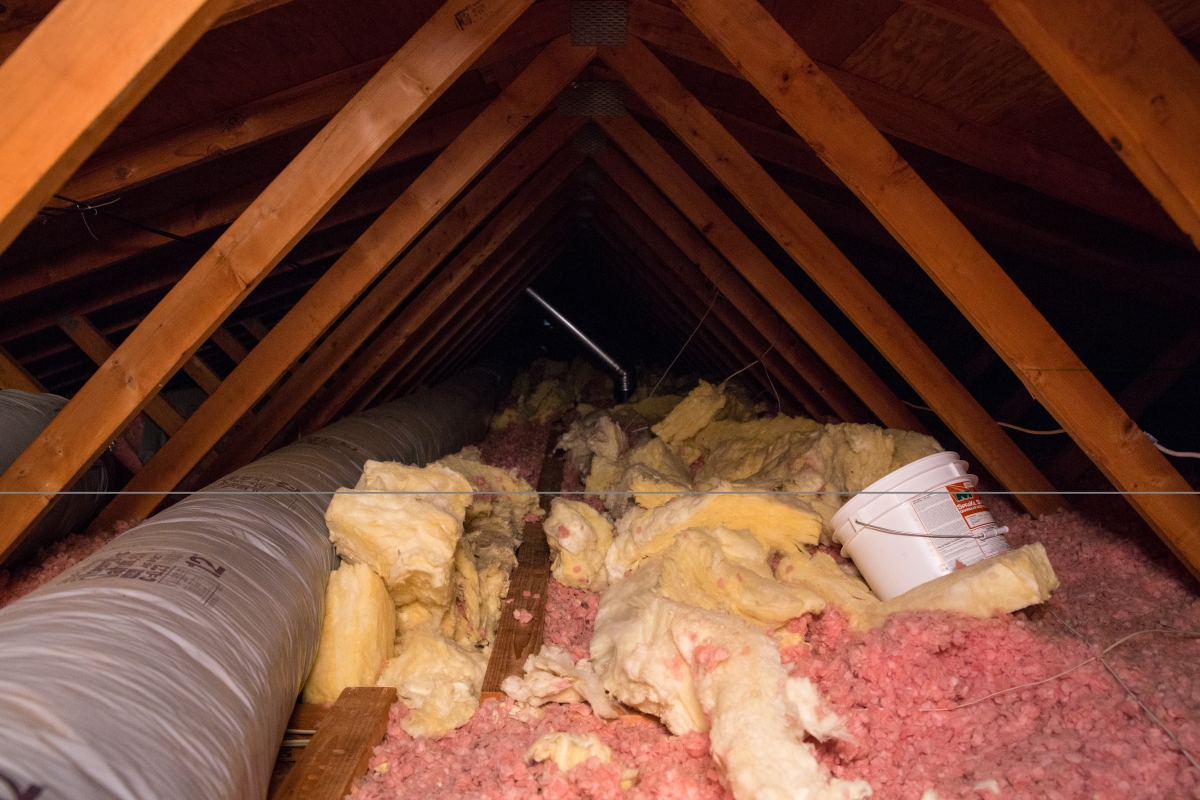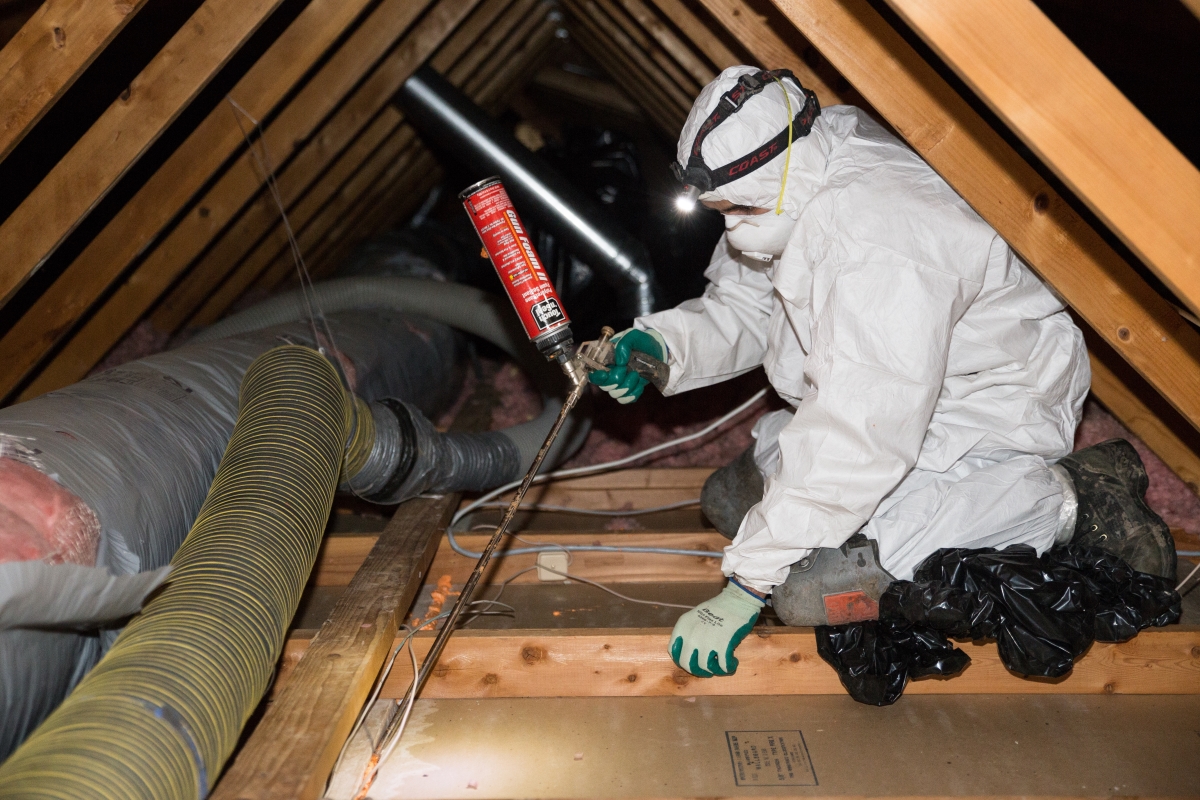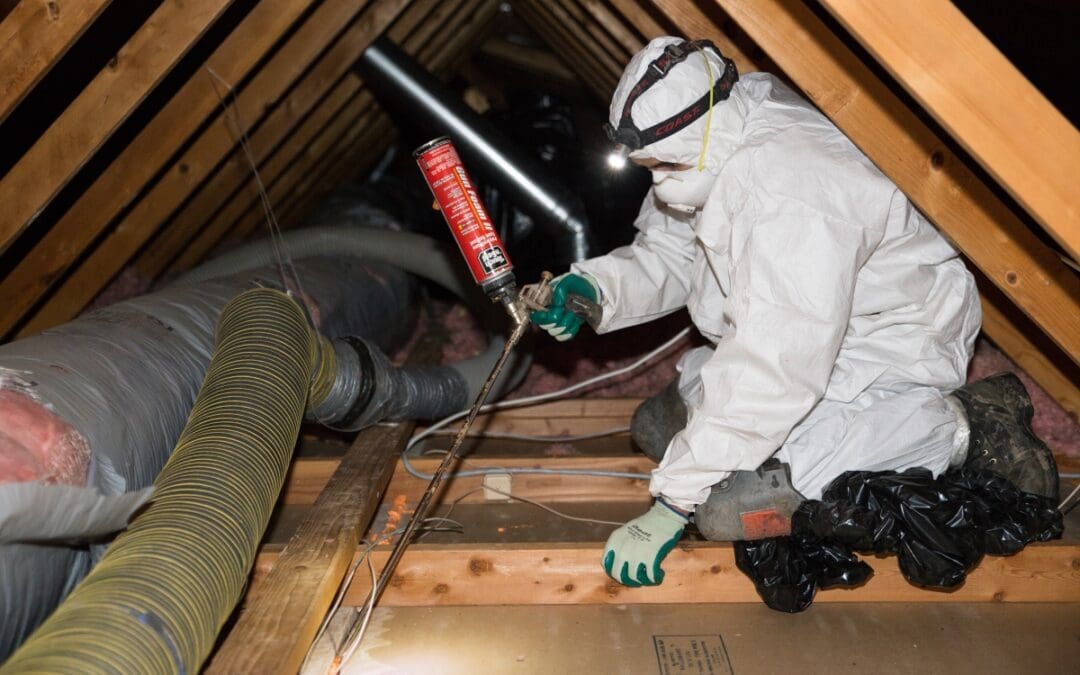
The main reason for attic insulation is to keep the heat inside the home which lowers the homeowner’s heating cost over time.
DIY attic insulation and Crawl Pros installation approach consists of removing current attic insulation, installing new insulation, and inserting tape measure sticks to ensure accuracy.
DIY attic insulation might be appealing for its lower upfront cost compared to having it professionally installed, however, initial savings typically turn into additional costs in energy use, material investment, and a time-consuming DIY fix that may not hold up long-term as a high-quality, professional attic insulation installation would.
The Benefits And Importance of Attic Insulation
Attic insulation is highly beneficial in Oregon, Washington, and especially the Boise, Idaho area. When the temperature drops in the winter months, some homes – especially older homes – may struggle to keep heat inside the home. The lack of AC found in Pacific Northwest homes can lead to sweltering circumstances indoors – especially without expertly installed insulation in your attic.
High-quality insulation can help you beat the heat in your home and provide additional measures to maintain a warm home in the winter.
You might want to DIY attic insulation to reduce the upfront attic insulation cost. This is indeed an option–but is it the wisest one? We’ll examine this question further below.
Types of Attic Insulation
Depending on your climate and insulation needs, you may need different types of attic insulation. Here are some examples of the types of attic insulation:
Loose-Fill Insulation
- Pros use loose-fill insulation for attic projects.
- It’s also called blown-in insulation.
- Typically, this process entails bags of loose cellulose, metal wool, fiberglass, or similar materials. A designated machine is used to blow the loose materials into place.
- Loose-fill insulation costs $1 to $4 per square foot.
Blanket Insulation
- Blanket insulation is popular for DIYers because the sheet-like material is easy to affix to unfinished areas of your attic.
- The sheet’s composition consists of fiberglass, plastic, or natural materials (e.g., minerals and wool).
- Blanket insulation usually costs $2 to $4 per square foot.
Spray Foam Insulation
- Spray foam is an ideal supplemental insulation, as it’s usually added to parts of your attic that are insulated.
- This type of insulation is also ideal for oddly shaped portions of your attic because standard insulation installation becomes too difficult.
- The foam turns solid once it dries and can equal other effective insulation methods.
- Spray foam insulation is usually $2 to $5 per square foot.
Panel Insulation
- Panels are the largest choice we’re discussing (they’re purchased as 4-foot-by-8-foot boards.)
- Due to its larger size, panel insulation is more suitable for new construction projects and not typically ideal for your traditional attic renovation.
- This is one of the best attic insulation options for energy efficiency.
- Panel insulation for your attic is $4 to $7 per square foot.
100% Borate Treated Cellulose Insulation
- This insulation is what we use at Crawl Pros and we feel that it is the best attic insulation option.
- One of the traits we love most about this insulation is its sustainability.
Learn more about our insulation pricing by booking a free estimate.
DIY Attic Insulation Process
DIY attic insulation can have many pitfalls. Typically, DIYing is an impermanent band-aid solution that only temporarily offers benefits. When approaching DIY solutions, you should consider whether or not it is the most effective and safe route to take for your home.
If you decide to move forward with the DIY process, here are the tools and materials you should expect to need before beginning installation.
- Dust mask
- Tape measure
- Goggles
- Ruler
- Flashlight
- Utility knife
- Work gloves
- Caulk gun
- Long-sleeve shirt
- Long pants
- Foam sealant
- Box cutter
- Staple gun
- Rake Cellulose (loose-fill) bags
- Fire-blocking caulk
- Rigid insulation
- Permanent marker
- Notepad
- Rigid insulation
- Fiberglass blankets or batts
- 13-gallon garbage bag
- Plywood access panel
- Aluminum flashing
- Self-adhesive weather stripping
- Hardware cloth (optional)
- Blower machine (optional)
- Battery-operated lantern (optional)
How to Install Attic Insulation
After determining which type of attic insulation you’d like to install, it’s time to start the actual installation process. Here’s a generalized step-by-step breakdown of the insulation process from scratch:
- Step 1: Gain access to the attic
- Step 2: Seal all air leaks
- Step 3: Replace/protect heat-producing items such as can lights
- Step 4: Perform attic vent chute installations
- Step 5: Complete joist measurements
- Step 6: Lay out rolls/batts
- Step 7: Lay layer #2 of rolls/batts
One pro tip we can offer if you decide to go the DIY attic insulation route is to not skimp on insulation–it’s better to have too much instead of too little. If you aren’t sure how much insulation is appropriate – consult an expert.
Here at Crawl Pros, we will always recommend you have a professional crawl space expert install attic insulation in your house.
Why Should I Work With an Attic Insulation Professional Instead?
Working with a crawl space professional to add insulation to your attic may cost more upfront than DIY attic insulation. However, the benefits of working with the experts vastly exceed the benefits of DIY efforts.
Our solutions are implemented with durability in mind. You will end up paying less in the long run by hiring an expert crawl space company like Crawl Pros. With Crawl Pros, you may not have to pay for insulation repairs or replacements as you would after taking the DIY route.

Provided you want to get the best attic insulation and maximize the value of your installation, you’ll use blown-in insulation. This option generally requires a professional’s touch. Cellulose (especially when treated by borate) offers superior results since it accesses all attic areas, including hard-to-reach spaces.
Some other drawbacks of DIY attic insulation to be aware of are the physical toll that hauling insulation to your attic may be, as well as the lack of maneuverability that many alternative insulation products have which limits its effectiveness. Lastly, you’ll be forced to make more physical contact with insulation, which can inflame your skin.
Crawl Pros Attic Insulation Process
The Crawl Pros attic insulation process begins with us removing ineffective attic insulation safely and cleanly. We’ll bag large debris and fiberglass batt insulation by hand. Any remaining loose insulation and debris will be vacuumed outside of your house.

